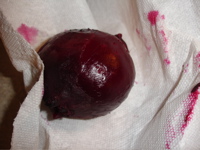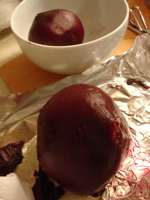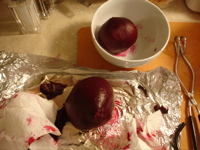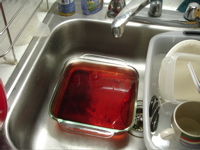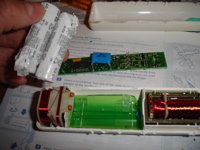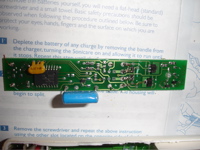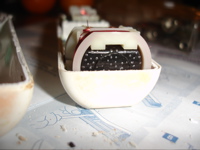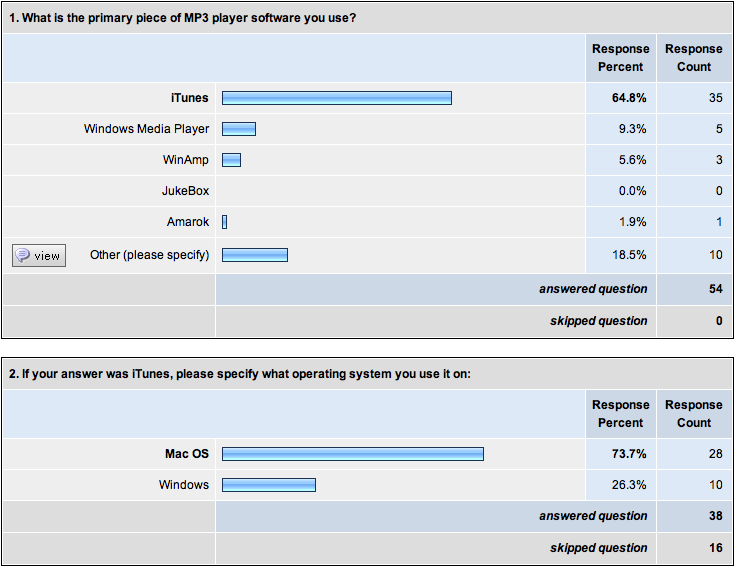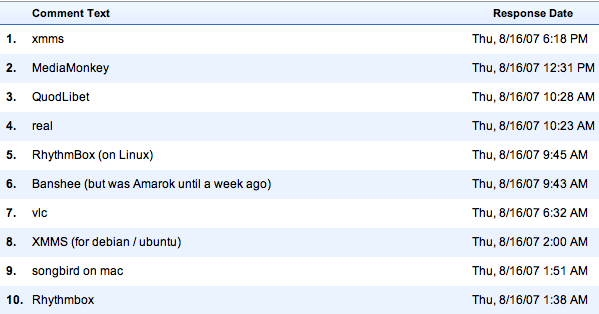“Helvetica rejected Sonic Youth.”
I just had the pleasure of watching Helvetica, a film about the font, typography, and the wide range of deep responses we can have to the way we write our letters in space. It is a great movie; go see it if you can.
Director Gary Hustwit was there with us, answering questions after the show. The funniest part was him describing how he got the music for the film (“What does Helvetica sound like??”), most of which was straight from the iTunes playlist he was listening to at the time he conjured up the idea for the film. (Think Four Tet, Caribou, Sam Prekop.) He’s got a background producing music documentaries, so has plenty of connections.
Hustwit says he even got five unreleased, instrumental tracks from Sonic Youth, for him to use in the film. But the tracks just wouldn’t fit, no matter how hard he tried. “Helvetica rejected Sonic Youth.”
The way that this statement makes so much sense is… indescribable to me, and utterly satisfying.
Eating dinner at the Museum of Science
 Last night’s catered Media Lab sponsor dinner was at the Museum of Science. I can’t tell you how funny it is to be playing with an exhibit, pressing buttons to adjust the speed of an animated school of fish, and have someone step up to you with a tray of treats and say, “Spanakopita bite?”
Last night’s catered Media Lab sponsor dinner was at the Museum of Science. I can’t tell you how funny it is to be playing with an exhibit, pressing buttons to adjust the speed of an animated school of fish, and have someone step up to you with a tray of treats and say, “Spanakopita bite?”
My favorite exhibit, hands down, is the “Mathematica” exhibit, which, I just learned, was designed by Charles and Ray Eames. Figures.
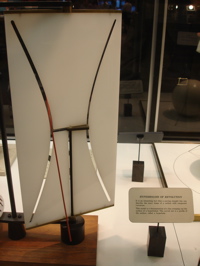
My favorite part of that exhibit is the Hyperboloid of Revolution. It’s beautiful and elegantly simple. (short video — 6.5 MB)
The sign says:
HYPERBOLOID OF REVOLUTION
It is an interesting fact that a moving straight line can describe the exact shape of a surface with compound curvature.
This model is a demonstration of a line sweeping out the surface of a hyperboloid. The curved slot is a profile of the surface, called a hyperbola.
Preparing for the Thesis
This afternoon was 3.5 hours of “rapid-fire”, “elevator-pitches” in the Media Lab’s Thesis Preparation course. So all 33 of the 2nd-year Masters students presented in 3 minutes what they hope to do for their Masters work this year.
The best part of an activity as draining as this is to walk away from it knowing that tons of awesome stuff is going to happen in the lab this year.
Here are some of the projects we can all look forward to:
- Programmable Matter — little cube automata that can be programmed to move relative to each other with electromagnetics.
- Cross-cultural Music Transformation — a translator for one culture’s musical style into another.
- Hi-Res, Low-cost Holographic Video
- “Comm.unity” — A platform that learns our social relationships and uses those to enable easy transfer of data between mobile devices in our social network.
- “Intelligent Stickies” — ink recognition, location awareness, and commonsense knowledge in Post-its.
- Investigating the placebo effect in active medicines — How does the packaging/branding change the effectiveness of a drug?
- Transforming digital content as it is copied and shared. Exploring making digital media more like analog media, which bears traces of previous usage.
- Wearable, wireless sensing for sports medicine, specifically for baseball pitchers.
- “E15” — a new way to browse the web.
- A digital platform for creation of interactive art in a networked environment.
- Persuasive Robotics — How can robots affect our attitude and behaviors? How is robot-human interaction different from human-human interaction?
“Visual Music” lecture
I gave my first lecture today. It was a 2.5-hour class on visualizing music, part of the Musical Aesthetics & Media Technology class I am TA-ing.
I spent much of the last few days preparing for this, and I found some impressive examples of visualizing music from the past few hundred years. In fact, there were so many examples that one of the hardest parts of preparing for the talk was defining its scope. I chose the examples I thought were most relevant to telling my version of the story, including Klee, Kandinsky, Oskar Fischinger, the Whitney brothers, Fantasia, all the way up to Ratatouille, the Music Animation Machine, and Martin Wattenberg’s The Shape of Sound. You can see all of these here, in my presentation:

Click image above to download interactive QuickTime slideshow (4.2 MB)
Underlined texts are link-outs, and you can use arrows to navigate through the show.
My favorite example of all is Oskar Fischinger’s Allegretto, which blew me away. Unfortunately I can’t find this online, but there is a fantastic DVD with that video available here.

(Tomorrow or Friday I will follow up with a set of links that cover the best examples of visual music that I found, including a couple of killer blog finds. That set will be much larger than what I was able to cover in class today.)
indigo : pea :: sepia : cuttlefish
Sepia is just that brownish color you can use to make your digital photos look old, right? Guess where the word comes from!
It’s actually the Greek word for cuttlefish. ((from the Oxford American Dictionary))
sepia |ˈsēpēə| noun
a reddish-brown color associated particularly with monochrome photographs of the 19th and early 20th centuries.
- a brown pigment prepared from a black fluid secreted by cuttlefish, used in monochrome drawing and in watercolors.
- a drawing done with this pigment.
- a blackish fluid secreted by a cuttlefish as a defensive screen.
(And indigo dye comes from a tropical plant of the pea family. ((Oxford English Dictionary, n. (a.))) )
Mapping your world
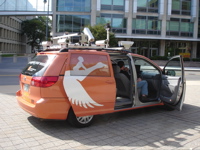 Tele Atlas held a workshop at the Media Lab today, and I got to go on a ride in one of their “mobile mapping vans”. They drive up and down the streets of major cities and highways in this van, which is equipped with several cameras and laser range-finders on the roof, with a GPS receiver and a rack of memory on the inside. Tele Atlas uses the imagery and distance data to help enhance and texture their new 3D maps, which nicely represent the shapes and appearance of the buildings along the streets.
Tele Atlas held a workshop at the Media Lab today, and I got to go on a ride in one of their “mobile mapping vans”. They drive up and down the streets of major cities and highways in this van, which is equipped with several cameras and laser range-finders on the roof, with a GPS receiver and a rack of memory on the inside. Tele Atlas uses the imagery and distance data to help enhance and texture their new 3D maps, which nicely represent the shapes and appearance of the buildings along the streets.
I climbed in next to the rack, in the only back seat, while my two friendly mapper-driver-dudes took me on a 5-minute ride around MIT, so that I could see the cameras in action. They have cameras on the roof, pointing to either side of the van, and two angled up at about 45º to get snapshots of taller buildings. They also have a “spherical” camera called a Ladybug, which has five cameras arranged in a ring, in a red housing. On either side of the roof are laser range-finders that map out the building layouts and shape as viewed from the road. (I love that the laser manufacturer is named SICK, and that they display this proudly on their devices.)
The guy in the passenger seat looks at maps and camera feeds on a pole-mounted laptop next to the seat, adjusting apertures and directing the driver to roads they have not yet covered. He’ll also mark a road if it’s under construction or one-way.
It seems slow-going; the van can’t take measurements if it travels above 33 mph. This guy’s been working with his partner to map Boston and Cambridge since the beginning of August. They’ll finish in the next week or two, and then move on to another city. I asked him how long it takes to map an area, and he tells me, “It depends on the traffic… Yesterday it was really bad in the Back Bay and Brookline, so we only covered about 75 kilometers in 6 hours.” On a good day, his best, they covered 170 km (106 mi).
Let the geo-nerditry commence!
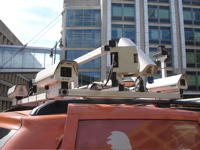
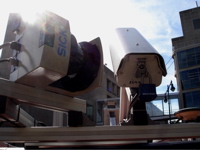
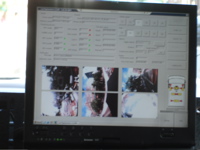
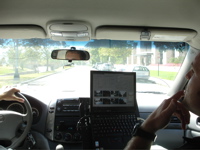
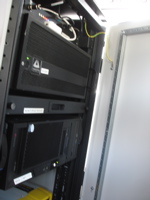
It can’t be… beet!
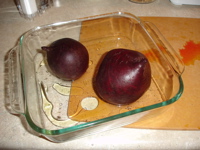 I just cooked beets for the first time. I’ve been wanting to cook them myself ever since I walked into my friend Deborah’s house a year ago and saw them boiling on the stove. It seemed so incredibly organic and healthy. So, yesterday in Whole Foods, I picked up a couple of firm, (slightly) muddy beets, and decided to have at it.
I just cooked beets for the first time. I’ve been wanting to cook them myself ever since I walked into my friend Deborah’s house a year ago and saw them boiling on the stove. It seemed so incredibly organic and healthy. So, yesterday in Whole Foods, I picked up a couple of firm, (slightly) muddy beets, and decided to have at it.
I baked/steamed them with a little water, olive oil, salt, and pepper, as described on the Whole Foods website:
Roasting beets concentrates the flavor and retains nutrients. For dry roasting, wrap individually in foil and bake at 375°F to 400°F for 45 to 90 minutes depending on size. Alternatively, place beets in a baking pan with a little oil, salt and pepper, add 1/4 to 1/2 inch of water in the bottom of the pan and cover the pan with foil. When done, a knife or fork should be able to pierce them with little or no resistance. Allow them to cool and peel off the skins by rubbing with a paper towel. Beet juice can stain your hands so you may want to wear disposable kitchen gloves.
My small beet took one hour, and the larger (about the size of my fist) an hour and twenty minutes. The skins peeled off nicely, and I chilled the naked beets in the fridge before slicing them up.
And.. they are delicious! Even with nothing else added. I’m having them on my salad tonight.
Behold, the carnage:
Inside my Sonicare toothbrush
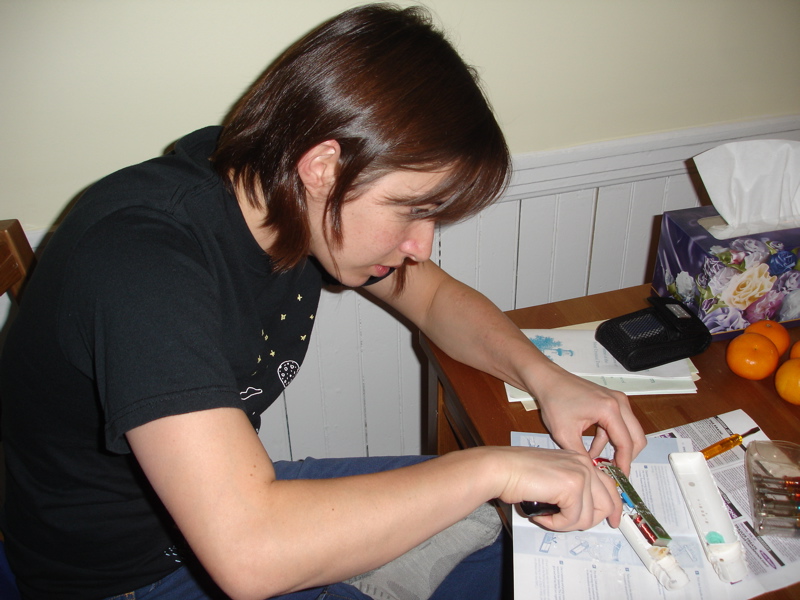
Last week I took apart my old and recently-broken Sonicare toothbrush, to remove the batteries before throwing the rest away. I thought the insides were interesting, and that others might like to see.
I pried open the case with two flathead screwdrivers; it cracked cleanly down the sides. Then I snipped the wires connecting the circuit board, and popped out the batteries (which turned out to be really normal “AA” NiCad rechargeables, except that they had leads soldered directly to the contacts — This was actually quite a disappointment, since, with such standard batteries, they should be easily replaceable… but to get at them you have to tear the whole toothbrush apart, breaking the housing, and destroying the whole thing).
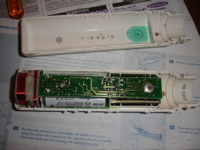
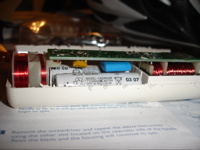
The inside contains:
- circuit board
- batteries
- two coils of wire, one on the bottom (next to where it would sit in the charger), and the other at the top (next to where the brush head attaches)
- a magnet at the base
… seems like the base is magnetically coupled to the charger, so that the current is passed from the charger to the coil in the toothbrush base via a magnetic field. This inductive coupling is not terribly efficient, but allows you to have a toothbrush that is completely sealed/waterproof, and that at least gives the perception of being safer due to a lack of metal contacts ((Draft Battery Charger Energy Star Standard)).
MP3 player software.
Here are the current results of the survey I posted last night:
Here’s what the ten people in the “Other” category are using:
Thanks for all of your responses! Even though this is certainly not an unbiased sample set, it looks like building something for iTunes is a pretty safe way to go. Hooray for quantitative decision-making!
MP3 player software?
Maybe you guys can help me learn something… I’m wondering what MP3 player software my friends use.
I set up a very short (2-question) survey at SurveyMonkey:
What MP3 player software do you use?
It should only take 6-10 seconds. And the benefit will last a lifetime. Maybe.
Thanks so much to all who help by answering! Your input will help me decide what my next project — a visualization of your own music listening patterns — will focus on.
Addendum: One day later, I posted the survey results in this blog post.
